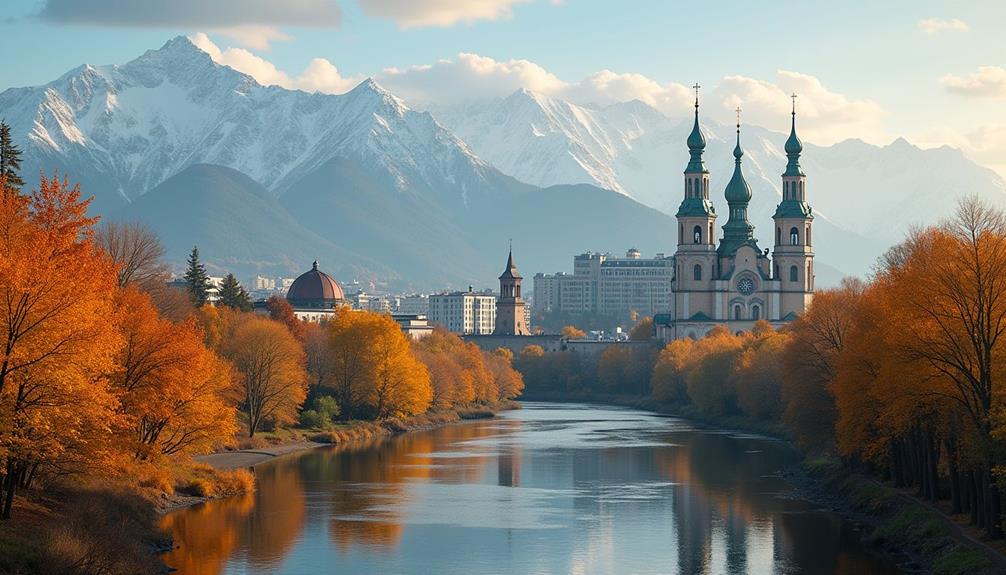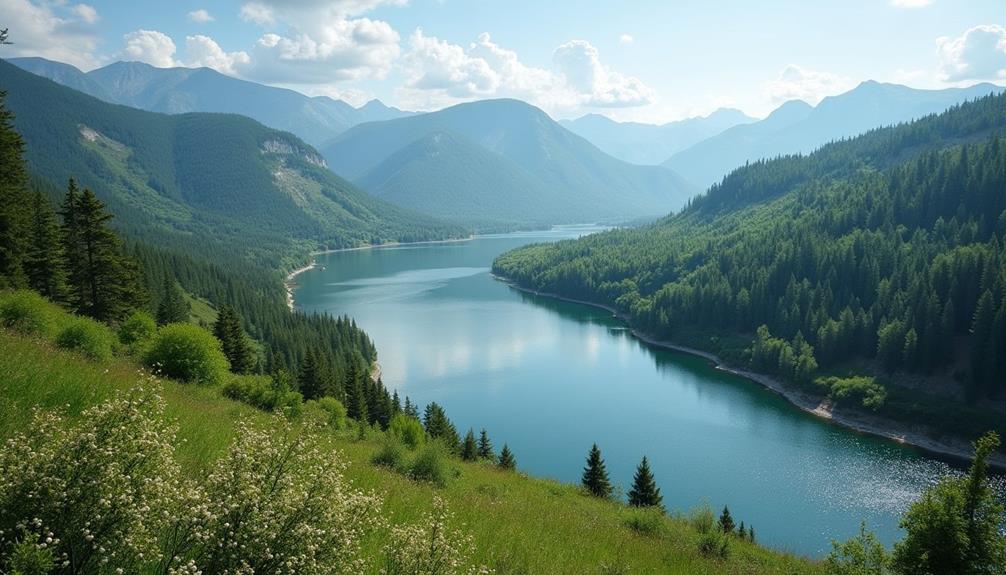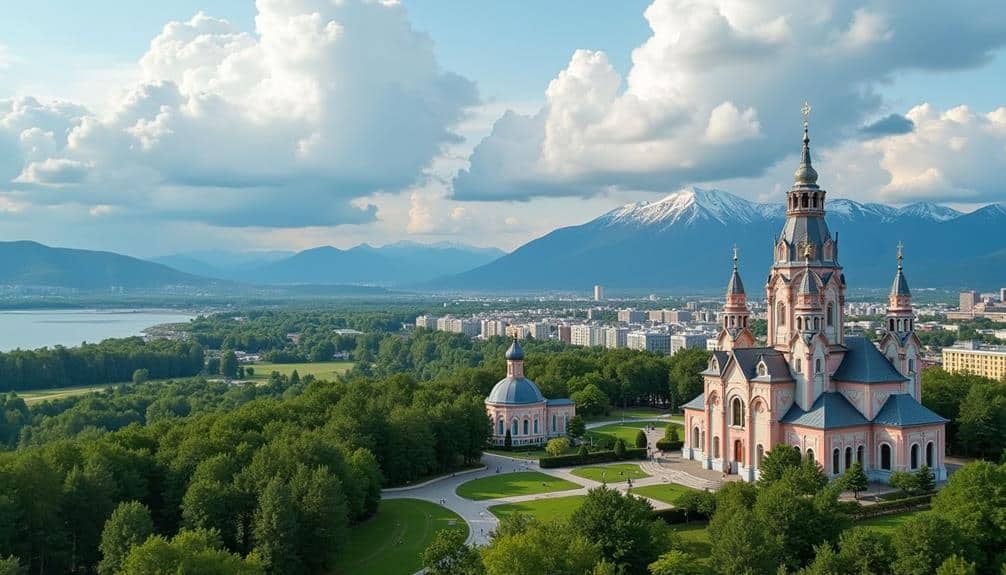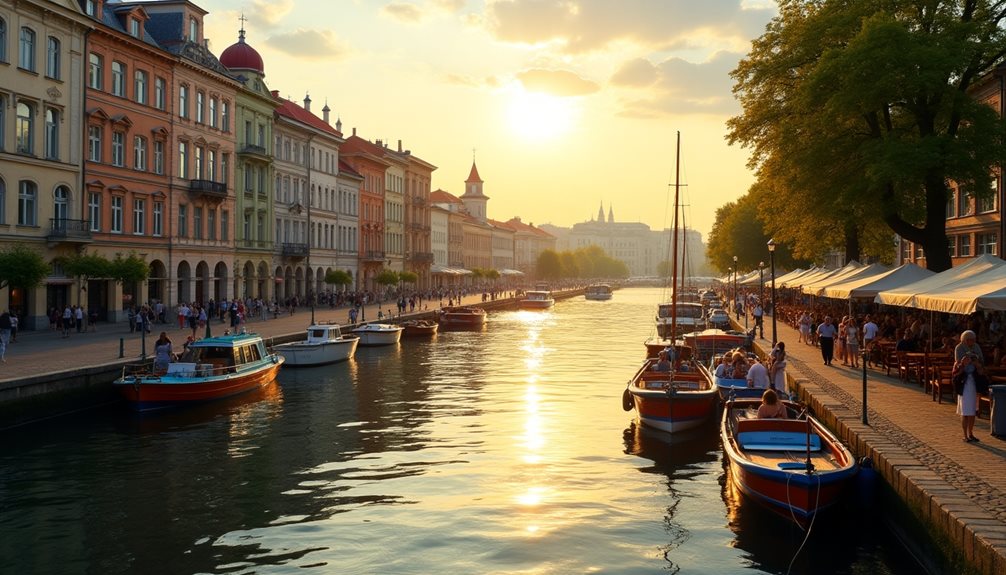The Yekaterinburg Region stands as a significant nexus between Europe and Asia, offering a unique blend of historical depth and economic vigor. Established in 1723, the region is home to notable architectural marvels such as the Church on the Blood, a symbol of its storied past. Coupled with the natural allure of the Ural Mountains and a vibrant cultural scene, including the renowned Yekaterinburg Art Biennale, it serves as a dynamic focal point in Russia’s Ural region. Yet, beyond these highlights, Yekaterinburg’s multifaceted identity invites further exploration into its intriguing complexities.
Interesting Facts about Yekaterinburg, Russia

Yekaterinburg, a prominent city in the Ural region of Russia, stands as a significant hub of cultural, economic, and historical importance. Nestled at the eastern foothills of the Ural Mountains, Yekaterinburg serves as a geographical bridge between Europe and Asia, enriching its cultural tapestry.
The city’s architectural landmarks, such as the Church on the Blood, resonate with historical gravitas, particularly due to their association with the Romanov family and other key historical figures.
The local festivals in Yekaterinburg, such as the Ural Music Night, offer a vibrant glimpse into the region’s artistic pulse, attracting myriad visitors annually. These events not only showcase local talent but also foster a sense of community and freedom of expression.
Additionally, Yekaterinburg’s culinary scene, deeply rooted in traditional Russian cuisine, offers a delightful array of dishes that highlight regional ingredients and time-honored recipes.
The city’s strategic location near the Ural Mountains provides both residents and visitors unparalleled access to natural beauty and outdoor activities, harmonizing urban life with nature.
Yekaterinburg stands out as a city where history, culture, and natural splendor converge, making it a compelling destination for those seeking both adventure and cultural depth.
Culture and History of Yekaterinburg, Russia
The rich tapestry of Yekaterinburg’s cultural and historical narrative is deeply woven into the fabric of the city’s identity. This urban center, founded in 1723, serves as a living museum of Russian architecture, blending classical and modernist styles across its landscape.
The Church on the Blood, erected on the site where the Romanovs were executed, stands as a poignant historical landmark, encapsulating the weight of Russia’s tumultuous past.
Cultural festivals in Yekaterinburg offer a vibrant glimpse into the region’s diverse heritage. The annual Yekaterinburg Art Biennale celebrates contemporary art, drawing international artists and attendees, thereby enriching the city’s cultural milieu.
Local cuisine, characterized by hearty dishes such as pelmeni and borscht, invites gastronomes to explore flavors reflective of the Ural region’s rich culinary traditions.
Art museums in Yekaterinburg, such as the Yekaterinburg Museum of Fine Arts, house expansive collections spanning Russian and European masterpieces, providing cultural depth and historical context.
The confluence of architectural marvels, culinary delights, and artistic endeavors not only shapes Yekaterinburg’s cultural landscape but also offers a liberated exploration of Russia’s multifaceted heritage.
Geographical Traits of the Yekaterinburg Region

Nestled in the eastern part of the Ural Mountains, Yekaterinburg’s geographical traits are distinguished by its position straddling the border between Europe and Asia. This unique placement fosters a rich blend of spatial patterns and regional contexts, making the area a focal point for diverse climatic conditions and varied natural landscapes.
The Ural Mountains not only provide a dramatic backdrop but also influence the region’s climate diversity, ranging from temperate zones to more severe continental climates.
The region is endowed with abundant natural resources, including minerals and metals, which have historically driven its development. These resources are intricately linked to the rugged topography of the Ural Mountains, making Yekaterinburg a significant player in Russia’s resource extraction industries.
Additionally, the area’s wildlife habitats are equally varied, supporting a range of flora and fauna unique to both European and Asian environments. Urban development in Yekaterinburg has been carefully structured to balance industrial growth with the preservation of these natural habitats.
This spatial harmony between urban and natural landscapes offers residents and visitors alike a sense of freedom, underscored by the region’s seamless blend of modernity and untouched wilderness.
Yekaterinburg’s Economy
Building on the unique geographical traits of Yekaterinburg, the region’s economy is a complex tapestry woven from its rich natural resources and strategic position.
As a nexus between Europe and Asia, Yekaterinburg has leveraged its location to become a hub of industrial growth and economic diversification. The region’s abundant mineral wealth, including metals and precious stones, fuels a robust mining sector, while the manufacturing industry thrives on this resource base.
Economic diversification is evident in the burgeoning technology and service sectors, which complement the traditional industries. This diversification has created a dynamic labor market that attracts talent from across Russia and beyond, fostering a competitive and skilled workforce.
The region’s investment opportunities are further enhanced by favorable trade relations, particularly with neighboring countries and regions within the Eurasian Economic Union.
Yekaterinburg’s infrastructure supports its economic ambitions, with well-developed transport networks facilitating efficient movement of goods and people.
The regional government actively promotes investment through various incentives, making it an attractive destination for both domestic and international investors.
This strategic blend of natural and human resources positions Yekaterinburg as a pivotal economic player in Russia, offering a model of growth and resilience.
Tourist Attractions of the Yekaterinburg Region

Yekaterinburg captivates visitors with its array of tourist attractions that reflect the region’s historical, cultural, and natural richness. Nestled against the backdrop of the majestic Ural Mountains, Yekaterinburg serves as a gateway to both natural and urban adventures.
The city’s historical architecture, such as the Church on the Blood, commemorates significant events, while structures like the Sevastyanov House exemplify ornate 19th-century design.
Art enthusiasts will find the Yekaterinburg Museum of Fine Arts and numerous local art galleries particularly compelling, offering insights into both Russian and international masterpieces.
For those seeking outdoor activities, the nearby Ural Mountains present opportunities for hiking, skiing, and exploring the region’s diverse flora and fauna.
Culinary explorers will relish the local cuisine, which features traditional Russian dishes infused with unique regional ingredients. The city’s vibrant food scene ranges from cozy cafes to upscale restaurants, offering a taste of both the familiar and the exotic.
Thus, Yekaterinburg harmoniously blends cultural depth and natural beauty, providing a multifaceted experience that appeals to diverse interests and fosters a sense of freedom and discovery among travelers.




